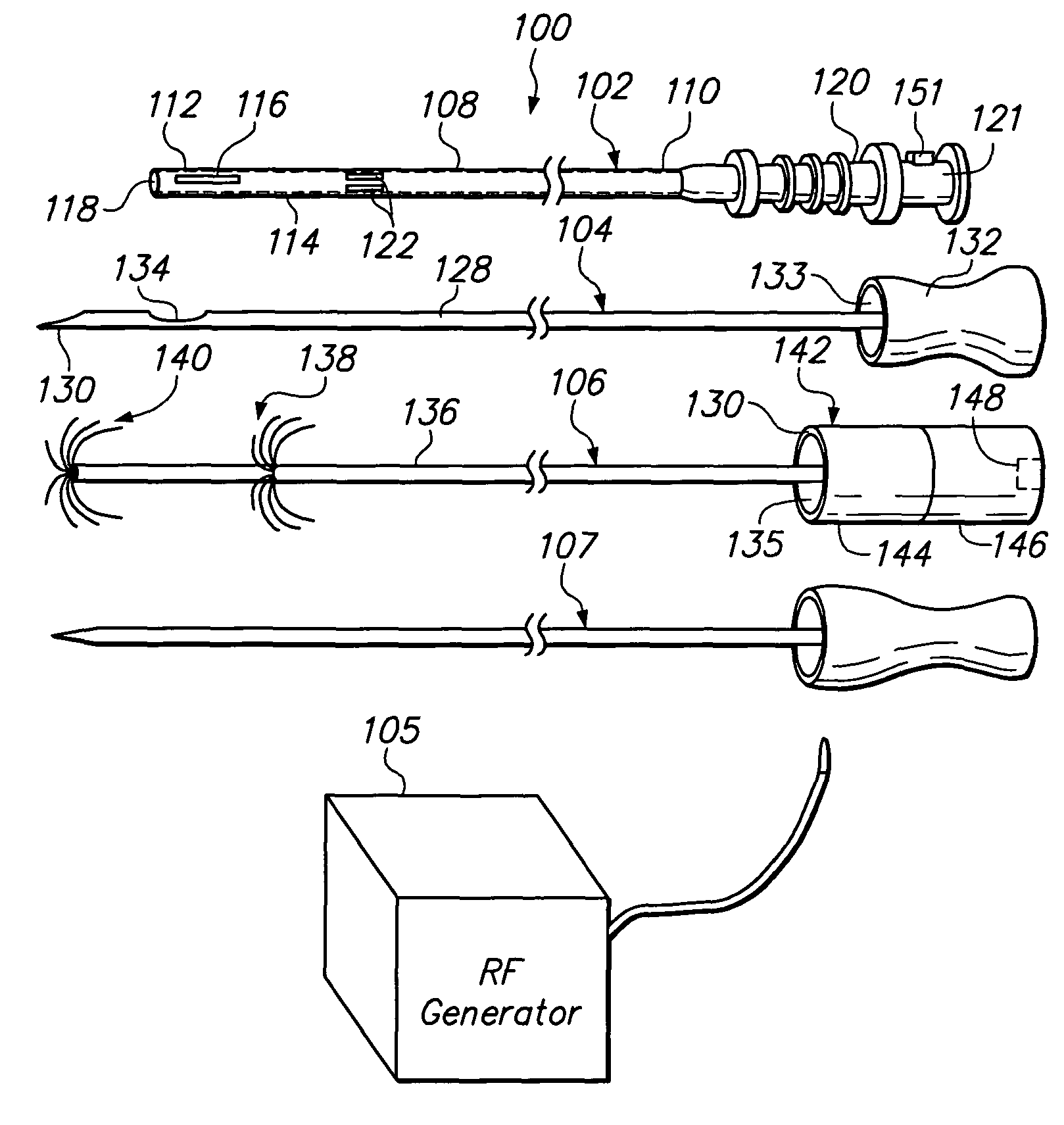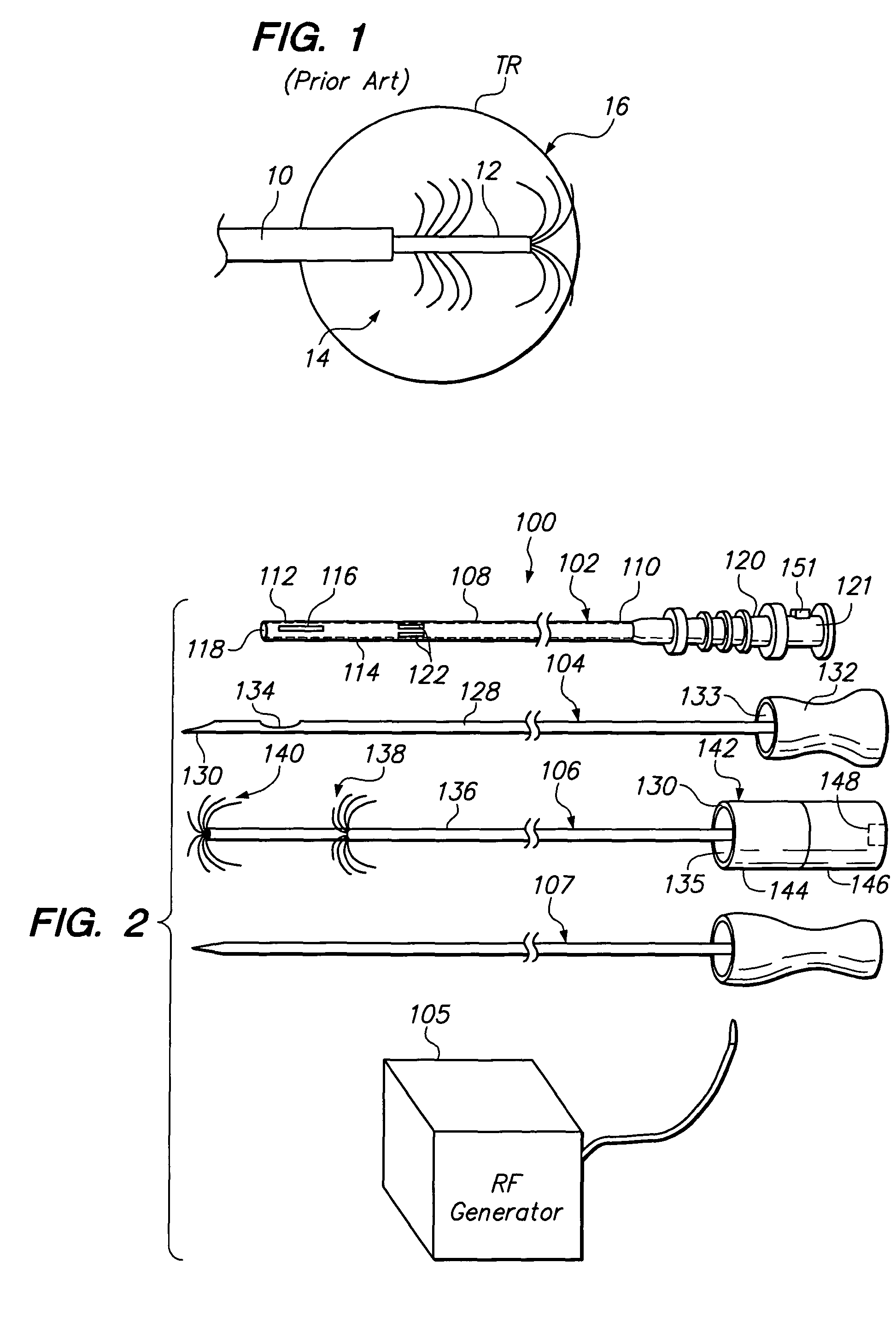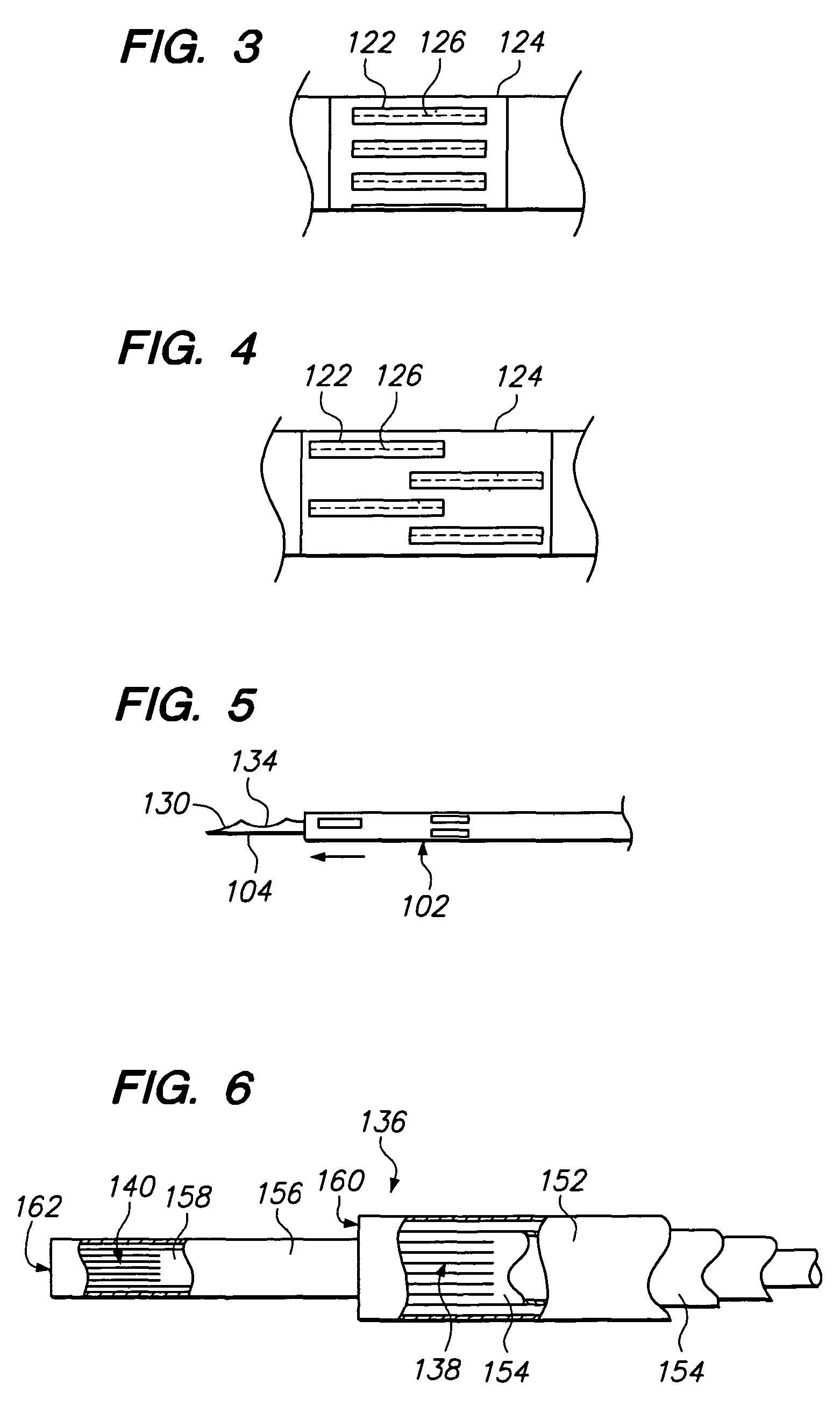Co-access bipolar ablation probe
a bipolar ablation and co-access technology, applied in the field of radio frequency ablation probes, can solve the problems of increasing the pain and discomfort of patients, painful burns, and currently existing co-access systems that do not work well with bipolar ablation electrodes, and achieves efficient and effective ablation
- Summary
- Abstract
- Description
- Claims
- Application Information
AI Technical Summary
Benefits of technology
Problems solved by technology
Method used
Image
Examples
Embodiment Construction
[0031]FIG. 2 illustrates a tissue treatment kit 100 arranged in accordance with a preferred embodiment of the present invention. The tissue treatment kit 100 generally comprises a delivery cannula 102 that can be percutaneously introduced within a patient, a biopsy stylet 104 configured for removing a tissue sample from the patient, and an ablation probe 106 configured for therapeutically ablating tissue. The biopsy stylet 104 and ablation probe 106 are configured to be alternately introduced through the delivery cannula 102 in contact with the tissue to be treated. The tissue treatment kit 100 may optionally comprise an obturator 107 configured for facilitating the percutaneous introduction of the delivery cannula 102 into the patient's body. The tissue treatment kit 100, and in particular, the ablation probe 106, is configured to be used with an radio frequency (RF) generator 105, as will be described in further detail below.
[0032]The delivery cannula 102 comprises a cannula shaft...
PUM
 Login to View More
Login to View More Abstract
Description
Claims
Application Information
 Login to View More
Login to View More - R&D
- Intellectual Property
- Life Sciences
- Materials
- Tech Scout
- Unparalleled Data Quality
- Higher Quality Content
- 60% Fewer Hallucinations
Browse by: Latest US Patents, China's latest patents, Technical Efficacy Thesaurus, Application Domain, Technology Topic, Popular Technical Reports.
© 2025 PatSnap. All rights reserved.Legal|Privacy policy|Modern Slavery Act Transparency Statement|Sitemap|About US| Contact US: help@patsnap.com



